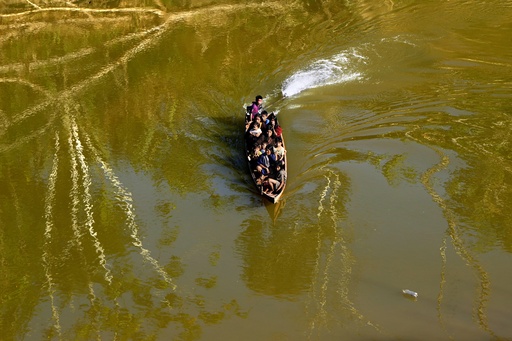In Apiwtxa Village, Brazil, the Ashaninka tribe along the Amonia River reside in a protected area of the Amazon rainforest. They have successfully reclaimed their land from ranchers and loggers over the past 30 years, replacing pastures with various trees and plants, including the sacred Ayahuasca vine and acai palm trees.
Having secured their autonomy, the Ashaninka are now focused on sharing their achievements with neighboring communities to safeguard the entire region from deforestation and exploitation of natural resources. In a significant development, an Ashaninka member was elected as the mayor of Marechal Thaumaturgo in 2016, becoming the first Indigenous mayor in Acre state in the Western Amazon.
An Ashaninka-led regional organization has recently been awarded a $6.8 million grant to enhance land management in neighboring Indigenous territories, which collectively span an area equivalent to the size of Delaware in the United States.
The Ashaninka’s territory, Amonia River, was officially recognized by the Brazilian government 32 years ago after a prolonged struggle. This recognition led to the expulsion of loggers and cattle ranchers who had previously employed Indigenous individuals in exploitative conditions. The Ashaninka relocated their main village to a strategic spot in an old pasture to monitor the area, initiating reforestation efforts and promoting self-sufficiency through agricultural activities while safeguarding the land.
At the forefront of the Ashaninka’s efforts are the Piyãko family, particularly Isaac Piyãko, who made history by becoming the first Indigenous mayor in Acre state in 2016. His reelection four years later marked the end of the political dominance held by rubber barons, loggers, and farmers in the region. Meanwhile, Isaac’s brother, Francisco Piyãko, is spearheading a project to share the village’s successful practices with neighboring Indigenous communities.
The consequences of climate change are increasingly affecting the Jurua Basin, with extreme weather events taking a toll on the environment. In response to the Amazon’s severe drought last year, the Amonia River’s temperature rose significantly, prompting the Ashaninka to refrain from using the water for bathing. Additionally, thousands of fish perished due to the warm conditions. Subsequent historic floods devastated crops and infrastructure in the area. This year, communities in the Amazon are facing another debilitating bout of drought.
This website uses cookies so that we can provide you with the best user experience possible. Cookie information is stored in your browser and performs functions such as recognising you when you return to our website and helping our team to understand which sections of the website you find most interesting and useful.
